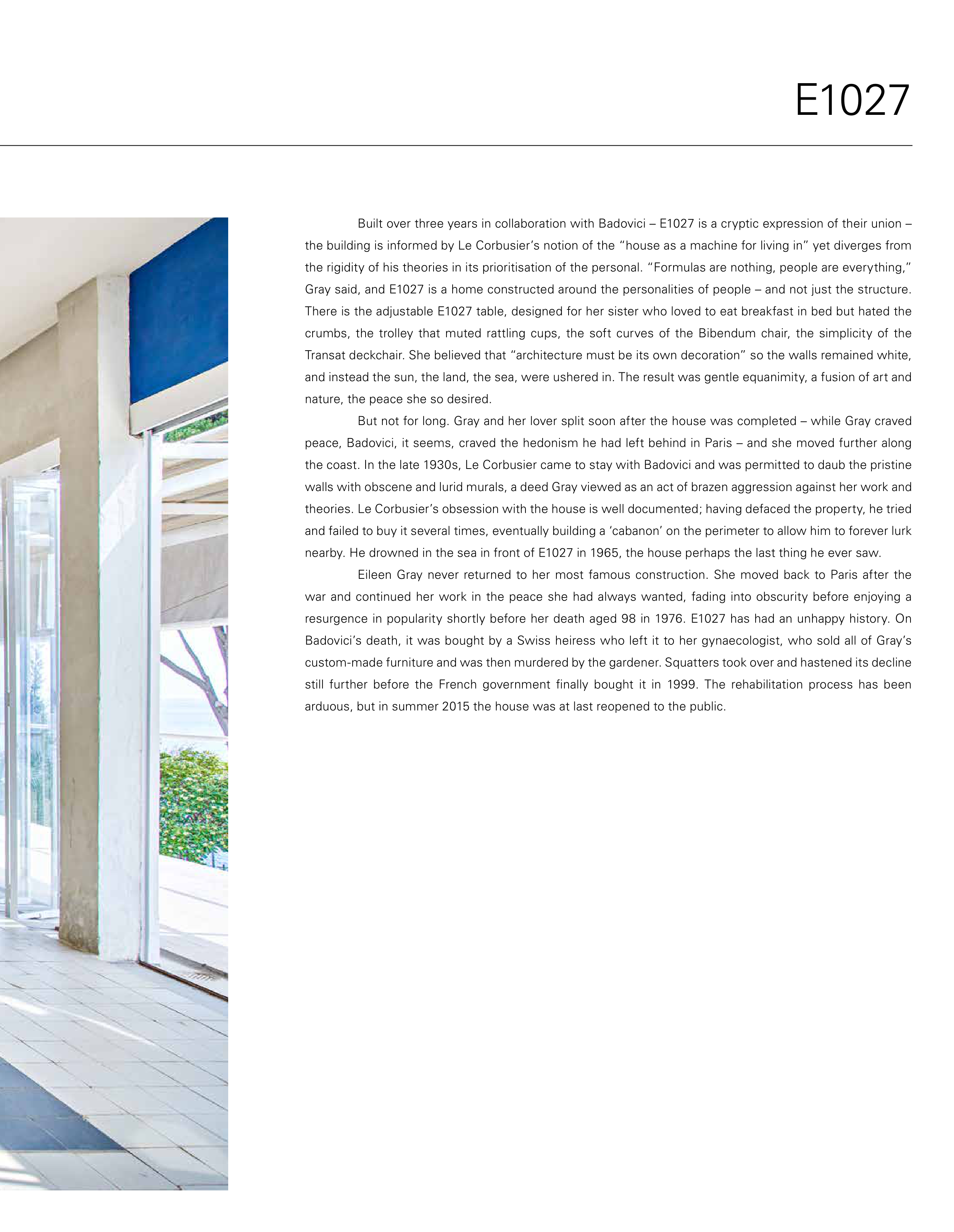Built over three years in collaboration with Badovici – E1027 is a cryptic expression of their union –
the building is informed by Le Corbusier’s notion of the “house as a machine for living in” yet diverges from
the rigidity of his theories in its prioritisation of the personal. “Formulas are nothing, people are everything,”
Gray said, and E1027 is a home constructed around the personalities of people – and not just the structure.
There is the adjustable E1027 table, designed for her sister who loved to eat breakfast in bed but hated the
crumbs, the trolley that muted rattling cups, the soft curves of the Bibendum chair, the simplicity of the
Transat deckchair. She believed that “architecture must be its own decoration” so the walls remained white,
and instead the sun, the land, the sea, were ushered in. The result was gentle equanimity, a fusion of art and
nature, the peace she so desired.
But not for long. Gray and her lover split soon after the house was completed – while Gray craved
peace, Badovici, it seems, craved the hedonism he had left behind in Paris – and she moved further along
the coast. In the late 1930s, Le Corbusier came to stay with Badovici and was permitted to daub the pristine
walls with obscene and lurid murals, a deed Gray viewed as an act of brazen aggression against her work and
theories. Le Corbusier’s obsession with the house is well documented; having defaced the property, he tried
and failed to buy it several times, eventually building a ‘cabanon’ on the perimeter to allow him to forever lurk
nearby. He drowned in the sea in front of E1027 in 1965, the house perhaps the last thing he ever saw.
Eileen Gray never returned to her most famous construction. She moved back to Paris after the
war and continued her work in the peace she had always wanted, fading into obscurity before enjoying a
resurgence in popularity shortly before her death aged 98 in 1976. E1027 has had an unhappy history. On
Badovici’s death, it was bought by a Swiss heiress who left it to her gynaecologist, who sold all of Gray’s
custom-made furniture and was then murdered by the gardener. Squatters took over and hastened its decline
still further before the French government finally bought it in 1999. The rehabilitation process has been
arduous, but in summer 2015 the house was at last reopened to the public.
E1027


